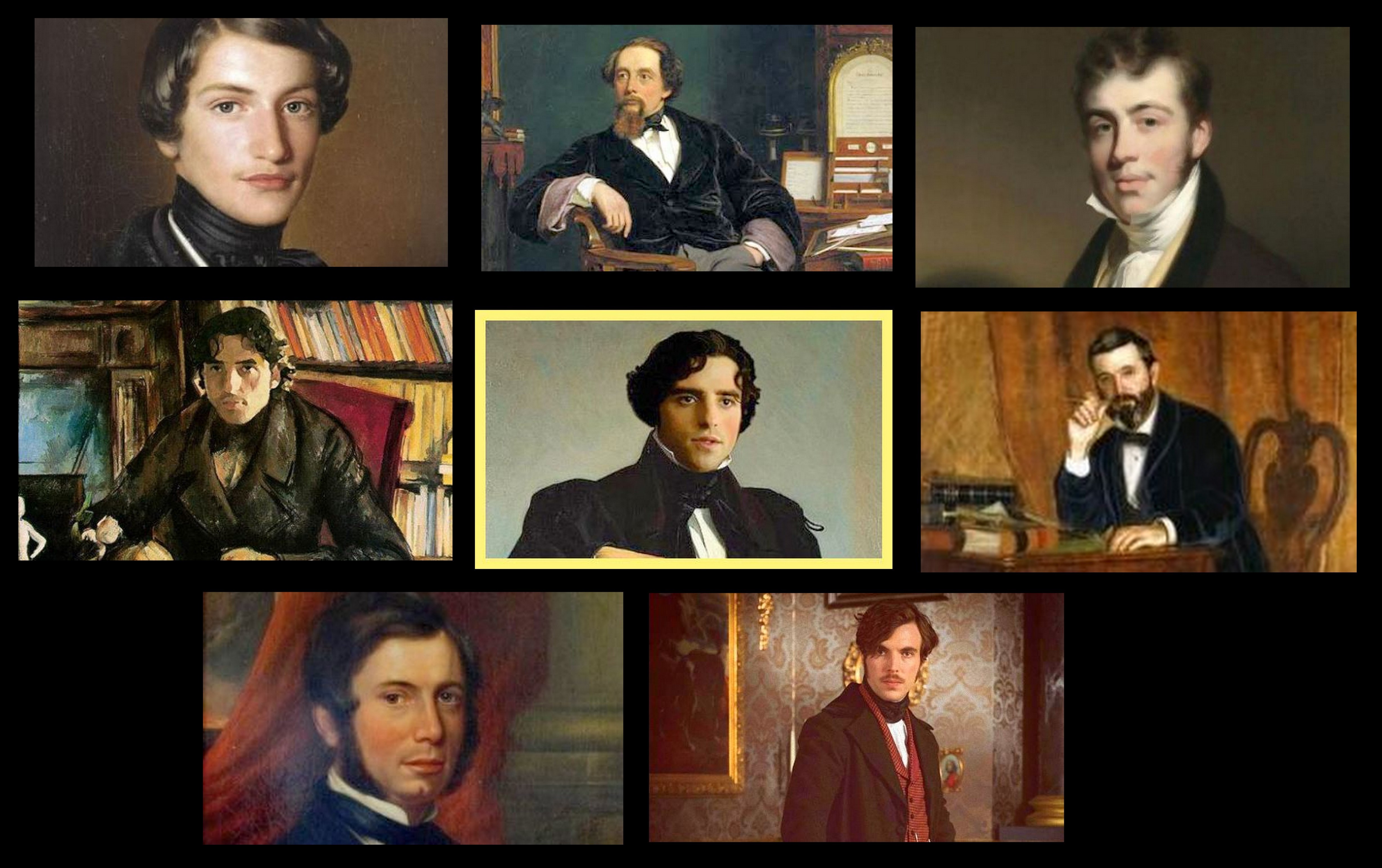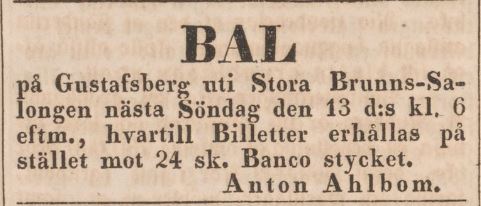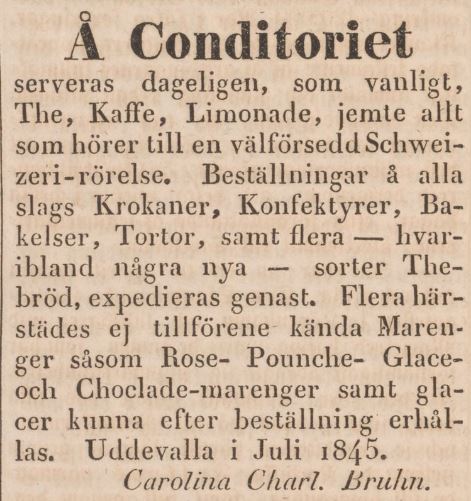In our family, we now have a “Zoom Room”. We have always Skyped with family members and had professional conference calls using a variety of platforms. Now, with the coronavirus pandemic, Zoom has become the popular way to connect. And with Zoom, one needs a room with the right lighting and some decent background. No more kitchen table conference calls with family members walking in the background.
TV hosts and their guests have also started to broadcast from home and it is interesting to study their choice of backgrounds – bookcases and artwork and portraits of family members.
So how would one decide what to have in the background and what would it signal?
Bohuslän’s Newspaper
Last night I was reading a Swedish newspaper, Bohusläns Tidning, from 1845. I had searched on Augusta’s family name and found an announcement in this paper that Augusta’s family had arrived at Gustafsberg’s Spa. In itself, it was a fascinating find and I will continue to follow that thread. But what else did the paper cover that day?
Well, there was a ball to be held at the spa the forthcoming Sunday and the tickets could be purchased at Anton Ahlbom’s for 24 skilling banco.
And Carolina Charlotta Bruhn was advertising her café where she served tea, coffee, and lemonade daily. One could also order all kinds of baked goods and especially the not-so-well-known meringues with rose-, punch-, vanilla-, or chocolate flavoring. Not to mention, ice-creams!
The Real Gentleman
And then, Hallman’s Book & Music store listed the arrival of the latest prints, musical notes, and books. There were prints of the Swedish opera singer, Jenny Lind, and pianoforte notes for a selection of songs from the opera La fille du régiment by the Italian composer Gaetano Donizetti.
And what about the books? The book with the most interesting title was The Real Gentleman, or Principles and Rules for Decorum and a Keen Sense under Special Conditions of Social Life. The actual title, once I found this book online, had the additional subtitle: A Tutorial for Young Men to make them liked in Society and by the Opposite Sex. The book was originally written in German by Professor J. G. Wenzel and now translated to Swedish.
This book is a gem for anyone who wants to understand the societal rules of the mid-1800s. I scanned the topics: The Beauty of the Body, The Gaze and the Countenance, Body Positions and Movements, and so on. Then it got to a very interesting chapter: Furnishing of the “Reception Room”.
Furnishing of the Reception Room
During Victorian times, visitations were important and visitors would be received in the reception room (or drawing room, or parlour, depending on the regional differences in naming this room). According to the author, the furnishing of the reception room was of utmost importance if you wanted to be liked in Society and by the opposite sex!
And these were the important considerations for furnishing the reception room:
“…Everything here should betray a purified taste as well as knowledge of the world and times. Paintings, household utensils, and ornaments must make it clear to the visitor that he is in a house where understanding, taste, and fine customs abide.
…This room, designed for the reception of strangers, should be suitably furnished so that neither cabinets, dining tables, desk, dressers, toilet mirrors, nor beds are visible. Chandeliers or lamps, game tables, ottomans, divans, sofas, canopies, or so-called bouncer, etc., are the things that belong in a reception room…
…Well-polished tables and chairs of mahogany or good native tree species and in a modern style make a favorable impression.
…If there are several wide walls in the room, then it is necessary, between the chairs, to set appropriate tables with a vase, a clock, a beautiful alabaster figure, etc. To decorate the tables in the reception room with glass, porcelain, or other everyday objects is of low taste, even as it has often been fashionable.
…If one wants to hang paintings or etchings in the reception room, then they should be made by a master artist and have a suitable subject. Naked figures are obscene, even if they were made by the greatest master. Family portraits, mostly of the present owners, also do not fit in the reception room. One should not want to place one’s dear self everywhere.
Finally, it is obvious that the room should be tidy and free of dust.
Furnishing of the Zoom Room
Today’s Zoom Room is what the Victorian Reception Room was, a room where you will meet your friends, discuss, debate, and share stories. So what can one learn from The Real Gentlemen’s principles and rules? What should be the background in your room when you greet your visitors on Zoom?
- The room should be suitably furnished so that dressers, toilet mirrors, and beds are not visible.
- Everything should betray a purified taste as well as knowledge of the world and times.
- If one wants to hang paintings, they should be made by master artists.
- No paintings of nudes even if they were made by the greatest master!
- No family portraits.
- Keep it tidy, and no dust!
What about bookshelves? It seems to be popular today. Did the gentlemen of Victorian times not read a lot?
I am sure the author would have suggested a bookshelf if the books betrayed a purified taste and knowledge of the world and the times, if there were no nudes on the dust jackets, and if there were no dust on the shelves.



